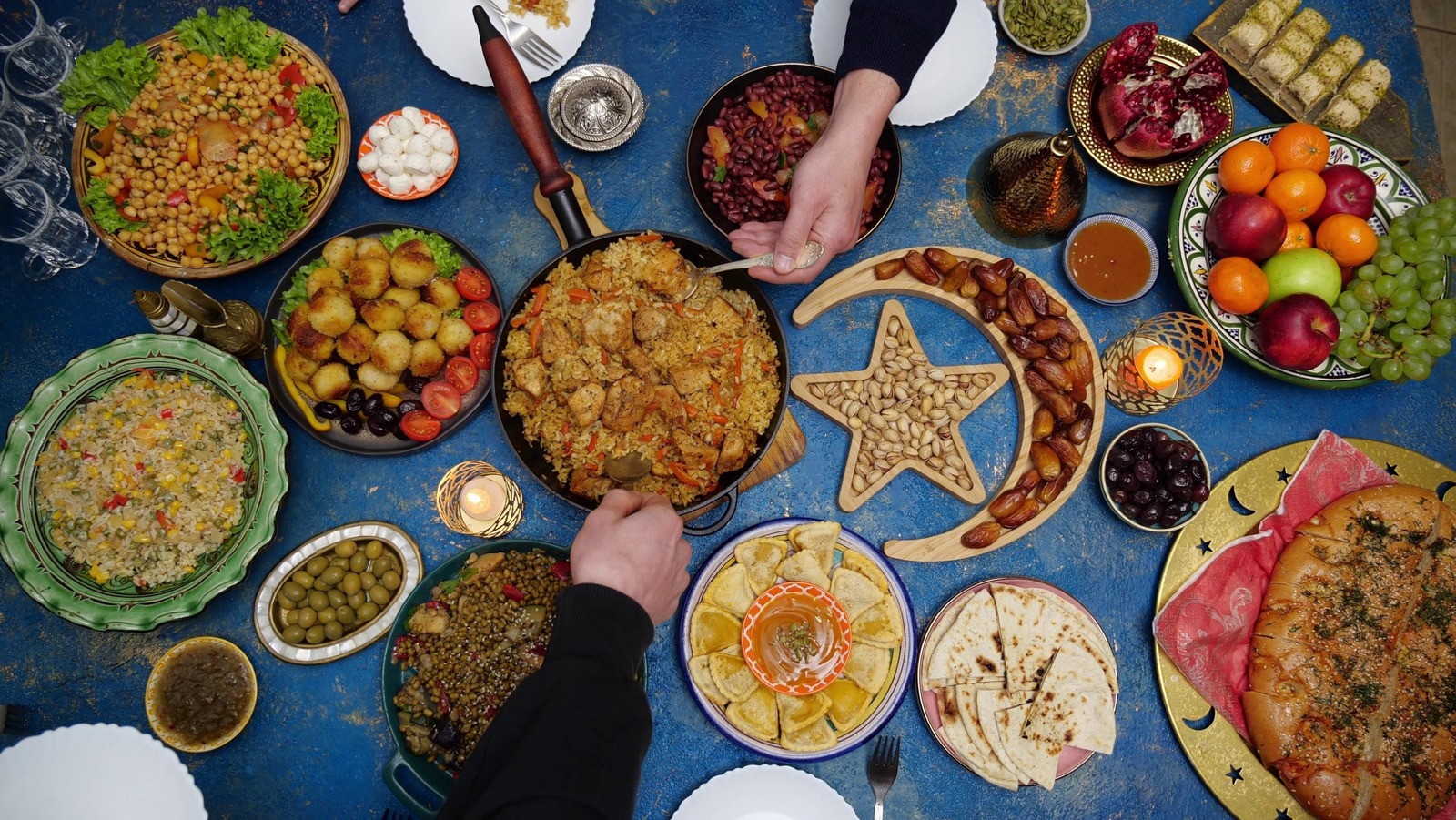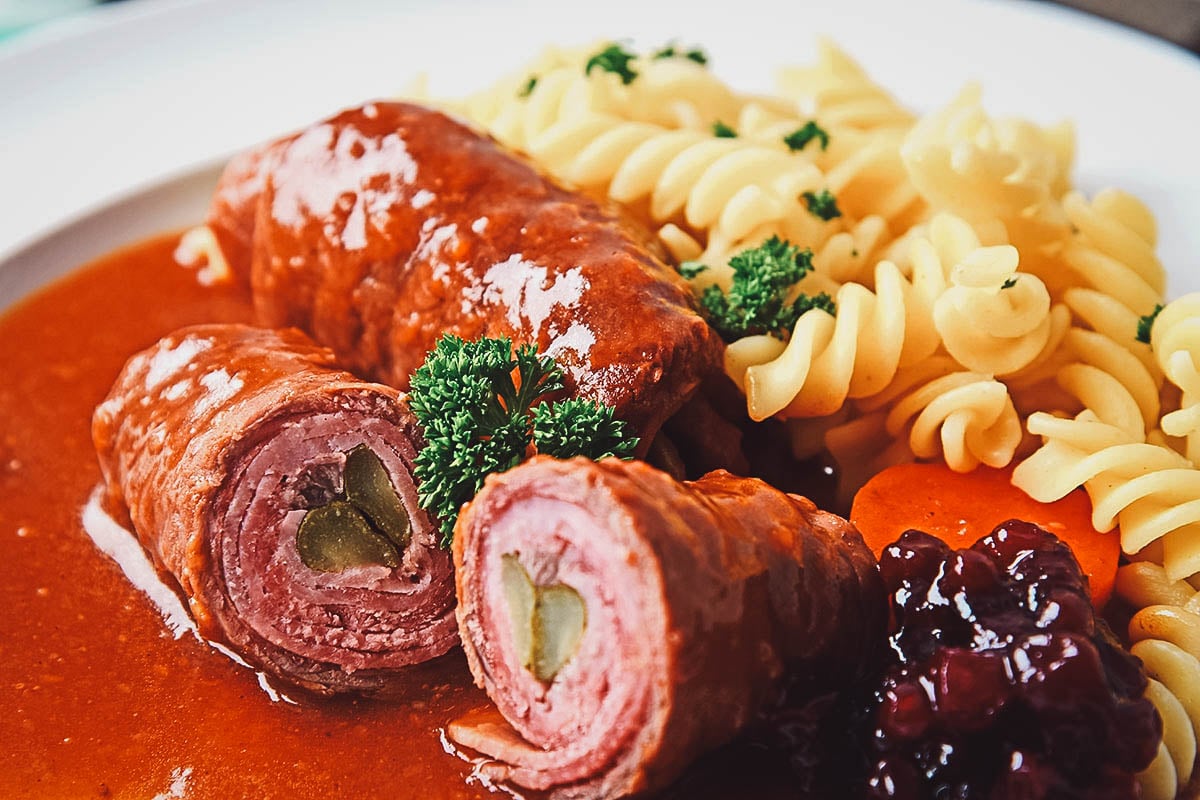Food Truck Design Software: Crafting Your Mobile Culinary Vision pickup.truckstrend.com
The aroma of sizzling street food, the vibrant graphics on a custom vehicle, and the bustling energy of a mobile kitchen – food trucks have revolutionized the culinary landscape. More than just a trend, they represent an entrepreneurial spirit, offering flexibility and direct engagement with customers. But behind every successful food truck, there’s a meticulously planned design, a blueprint that dictates efficiency, safety, and aesthetic appeal. This is where Food Truck Design Software steps in, transforming abstract ideas into concrete, actionable plans.
What is Food Truck Design Software?
Food Truck Design Software: Crafting Your Mobile Culinary Vision
Food Truck Design Software refers to a specialized category of computer-aided design (CAD) tools, or general CAD software adapted with specific libraries and functionalities, that allow aspiring and seasoned food truck owners, designers, and manufacturers to plan, visualize, and optimize the interior and exterior layout of a mobile kitchen. These platforms move beyond simple sketches, offering robust features to design everything from equipment placement and workflow paths to plumbing, electrical systems, and ventilation – all within the confined, yet dynamic, space of a vehicle.
Its importance cannot be overstated. In an industry where space is premium, regulations are stringent, and competition is fierce, effective design is not just about aesthetics; it’s about operational efficiency, health code compliance, cost-effectiveness, and ultimately, profitability. This software provides the digital sandbox to experiment, refine, and perfect your food truck before a single screw is turned or a weld is made.
Why is Food Truck Design Software Essential?
The decision to invest in a food truck is significant. Without proper planning, it can lead to costly mistakes, operational bottlenecks, and even legal issues. Food Truck Design Software mitigates these risks by offering a range of crucial benefits:
- Efficiency and Time-Saving: Designing a food truck from scratch is a complex, time-consuming process. Software streamlines this by providing pre-built libraries of common kitchen equipment, vehicles, and components, allowing for rapid drag-and-drop assembly and modification. This significantly cuts down design time.
- Cost Reduction and Error Prevention: Mistakes in physical construction are expensive to rectify. By designing digitally, you can identify and correct errors in layout, clearances, and utility routing before construction begins, saving thousands in rework and material waste.
- Compliance and Regulatory Adherence: Food trucks are subject to stringent health, fire, and safety regulations. Many advanced design software solutions include features or allow for easy integration of checks that help ensure your design meets local and national codes for ventilation, fire suppression, sanitation, and electrical systems. This is critical for passing inspections and obtaining permits.
- Visualization and Iteration: 2D and 3D rendering capabilities allow you to see your design come to life. This visual representation helps identify ergonomic issues, workflow bottlenecks, or aesthetic missteps. It also facilitates easy iteration, allowing you to try out multiple layouts and configurations without physical effort.
- Optimized Workflow and Space Utilization: A well-designed food truck maximizes every inch. The software enables precise placement of equipment, creation of efficient prep and cooking zones, and logical flow for staff movement, reducing steps and increasing output during peak hours.
- Branding and Aesthetics: Beyond functionality, the software helps visualize the exterior design, branding elements, window placement, and customer interaction points, ensuring your truck not only works well but also looks appealing and represents your brand effectively.
- Communication and Collaboration: Detailed digital plans serve as a universal language for fabricators, electricians, plumbers, and regulatory bodies. They ensure everyone involved in the build process is working from the same precise specifications, minimizing miscommunications and speeding up construction.


Key Features to Look for in Food Truck Design Software
When evaluating Food Truck Design Software, certain features stand out as indispensable for a comprehensive and effective design process:
- 2D/3D Design Capabilities: Essential for both detailed floor plans and immersive visual walkthroughs. 3D models help in understanding spatial relationships and clearances.
- Extensive Equipment Libraries: A rich database of commercial kitchen appliances (grills, fryers, refrigerators, sinks, hood systems), shelving, and utility components, often with accurate dimensions.
- Intuitive Layout Tools: Drag-and-drop functionality, snapping tools, and precise measurement options to easily arrange and align components.
- Utility Planning (Plumbing & Electrical): Features for mapping out water lines, drainage, gas lines, power outlets, wiring, and circuit breaker locations.
- Ventilation and Exhaust System Design: Tools to plan the size, placement, and routing of exhaust hoods, fans, and ductwork, crucial for health and safety compliance.
- Material and Finish Selection: Options to apply different materials (stainless steel, non-slip flooring) and finishes to interior surfaces for visual representation and material estimation.
- Rendering and Visualization: High-quality rendering capabilities to create realistic images or even virtual tours of the proposed design.
- Compliance Checkers (Optional but Valuable): Some advanced software might offer preliminary checks against common health and safety codes, or at least facilitate easy calculation of clearances and required air flow.
- Reporting and Documentation: Ability to generate detailed bills of materials, cut lists, blueprints, and specification sheets for fabricators and regulatory submissions.
- Collaboration Features: Cloud-based sharing and multi-user editing for teams or clients to review and provide feedback.

How to Use Food Truck Design Software: A Step-by-Step Guide
Designing your food truck with software is an iterative process. Here’s a general workflow:
- Define Your Concept & Menu: Before touching any software, have a clear vision of your menu. This dictates the type and quantity of equipment you’ll need.
- Choose Your Vehicle Base: Select the type of vehicle (e.g., step van, trailer, custom build) and obtain its precise interior dimensions. This will be your canvas.
- Input Vehicle Dimensions: Start by creating the exact internal dimensions of your truck or trailer within the software.
- Layout Major Equipment: Begin placing your largest, most critical pieces of equipment first (e.g., range, refrigerator, fryers, prep tables). Consider workflow – from food receiving and prep to cooking, service, and dishwashing.
- Add Utility Infrastructure: Map out plumbing for sinks (handwash, three-compartment, prep), water tanks (fresh and grey), and water heaters. Plan gas lines for cooking equipment and electrical outlets for all appliances, lighting, and service windows.
- Incorporate Safety Features: Place fire suppression systems, fire extinguishers, first-aid kits, and ensure adequate egress pathways. Design your ventilation hood system, accounting for CFM requirements based on your cooking equipment.
- Design Interior Finishes & Aesthetics: Select materials for walls, flooring, and countertops, keeping in mind durability, cleanability, and regulatory requirements (e.g., stainless steel in food prep areas).
- Review and Iterate: Critically examine your design. Can two people work efficiently? Is there enough storage? Are there any dead spaces? Use the 3D views to "walk through" your truck. Get feedback from experienced food truck operators or kitchen designers.
- Generate Blueprints and Plans: Once finalized, use the software to generate detailed 2D floor plans, elevation views, electrical diagrams, plumbing schematics, and equipment lists. These are vital for your fabricator and for permit applications.
Types of Software Used for Food Truck Design
While there isn’t always a singular "Food Truck Design Software" product, several categories of software are commonly employed:
- General CAD Software: These are powerful, professional-grade tools like AutoCAD, SketchUp (with Pro features), Revit, or Fusion 360. They offer immense flexibility and precision. Users typically download or create libraries of kitchen equipment to populate their designs. They have a steeper learning curve but offer unparalleled customization.
- Specialized Food Service Design Software: Some companies develop software specifically for restaurant and commercial kitchen design. While not always mobile-focused, they often have extensive equipment libraries and compliance features that can be adapted for food trucks. Examples include AutoQuotes or SpecWare.
- Online/Web-Based Design Tools: Simpler, often more user-friendly, and sometimes free or low-cost. These tools might offer limited features but are great for initial conceptualization or for users without extensive CAD experience. They often lack the precision for detailed utility planning.
- Vendor-Specific or Manufacturer Tools: Some food truck builders or equipment manufacturers might offer proprietary design tools or templates to help clients configure their specific products.
Important Considerations When Choosing Software
- Ease of Use vs. Features: Balance your need for powerful features with your comfort level with complex software. Beginners might start with simpler tools before moving to advanced CAD.
- Cost vs. Budget: Software licenses can range from free (limited versions, open-source) to thousands of dollars annually. Factor this into your overall budget.
- Compatibility: Ensure the software can import/export common file formats (DWG, DXF, PDF) so you can share plans with fabricators, architects, or engineers.
- Learning Curve & Support: How much time are you willing to invest in learning the software? Look for extensive tutorials, user communities, and responsive customer support.
- Library Completeness: A robust, pre-built library of kitchen equipment and vehicle components will save you immense time.
- Regulatory Compliance Support: While no software can guarantee full compliance, features that help with calculations (e.g., ventilation, clearances) are highly beneficial.
Tips for Effective Food Truck Design
- Prioritize Workflow: Design around the natural flow of food preparation, from storage to prep, cooking, serving, and dishwashing. Minimize cross-contamination risks.
- Think Ergonomics: Ensure comfortable working heights, adequate aisle space, and easy access to frequently used items to reduce staff fatigue and increase safety.
- Account for Maintenance: Design for easy cleaning and maintenance. Equipment should be accessible for repairs, and surfaces should be smooth and washable.
- Plan for Growth: If possible, consider modular designs or flexible spaces that can accommodate future menu changes or equipment upgrades.
- Consider Power Needs: Accurately calculate your total power requirements (electrical, gas) to ensure your generator, propane tanks, and electrical panel are appropriately sized.
- Ventilation is Key: A powerful and well-designed ventilation system is crucial for removing heat, grease, and smoke, ensuring a comfortable and safe working environment.
- Don’t Forget Branding: Integrate your branding into the exterior design, window placement, and even interior finishes to create a cohesive and attractive presence.
Challenges and Solutions
- Challenge: Complexity of Regulations.
- Solution: Utilize software that allows for precise dimensioning and provides detailed schematics that can be easily reviewed by health and fire departments. Consult with local authorities early in the design process.
- Challenge: Steep Learning Curve for Advanced Software.
- Solution: Start with simpler, more intuitive software for initial layouts. Invest time in online tutorials, YouTube videos, and user forums for more advanced programs. Consider hiring a professional designer for complex aspects.
- Challenge: Cost of Professional Software.
- Solution: Explore free trials, open-source alternatives (like FreeCAD), or student versions if applicable. Some online tools offer basic functionality for free.
- Challenge: Ensuring Real-World Feasibility.
- Solution: Always double-check dimensions with actual equipment specifications. Consider physical mock-ups if possible. Get feedback from fabricators who understand the constraints of mobile construction.
Price Table: Food Truck Design Software Examples (Estimates)
This table outlines common software types used for food truck design, their typical pricing models, and estimated costs. Please note that prices are subject to change, often vary by region, and may depend on specific features or licensing tiers.
| Software Name / Category | Type / Primary Use | Key Features (Relevant to Food Trucks) | Pricing Model | Estimated Price Range (USD) | Best For |
|---|---|---|---|---|---|
| SketchUp Free (Web) | Online 3D Modeler | Basic 3D modeling, component library (limited), conceptual design. | Free | Free | Beginners, conceptualization, simple layouts. |
| SketchUp Go | Online 3D Modeler | Web & iPad access, cloud storage, Trimble Connect collaboration. | Subscription | $119/year | Accessible 3D modeling, on-the-go design. |
| SketchUp Pro | Desktop 3D Modeler | Full 3D modeling, Layout for 2D documentation, Extension Warehouse for plugins (e.g., specific equipment libraries). | Subscription | $349/year | Detailed 3D modeling, 2D documentation, extensive customization via plugins. |
| AutoCAD LT | 2D CAD Software | Precise 2D drafting, dimensions, annotations, basic layering. | Subscription | $470/year | Accurate 2D floor plans, electrical & plumbing schematics. |
| AutoCAD | 2D/3D CAD Software | Full 2D/3D capabilities, industry-specific toolsets (e.g., Architecture, MEP), vast customization. | Subscription | $1,950/year | Professional 2D/3D design, complex utility routing, large projects. |
| Fusion 360 | CAD/CAM/CAE | 3D modeling, mechanical design, rendering, collaboration. | Subscription | $545/year | Integrated 3D design, engineering, and manufacturing prep (for custom parts). |
| Tinkercad | Online 3D Modeler | Simple drag-and-drop 3D shapes, easy to learn. | Free | Free | Very basic 3D conceptualization, learning 3D fundamentals. |
| Home Designer Suite (Chief Architect) | Home Design (Adaptable) | 2D/3D home design, kitchen & bath libraries, material lists. | One-time | $99 – $500 (depending on version) | Users familiar with home design software, adaptable for simple truck layouts. |
| Sweet Home 3D | Interior Design | 2D plan, 3D preview, furniture library, interior design focus. | Free (Open Source) | Free | Basic interior layout and visualization, good for quick mock-ups. |
| SmartDraw | Diagramming/Flowcharts | Floor plans, flowcharts, various templates, some CAD features. | Subscription | $9.95 – $16.95/month | Quick floor plans, organizational diagrams, easier to use than full CAD. |
Frequently Asked Questions (FAQ)
Q1: Is free food truck design software sufficient for my needs?
A1: For initial conceptualization, simple layouts, or getting a rough idea, free software like SketchUp Free or Sweet Home 3D can be sufficient. However, for detailed, precise, and compliant designs (especially for utility systems and complex equipment integration), professional-grade paid software or the assistance of a professional designer is highly recommended.
Q2: Do I really need 3D capabilities, or is 2D enough?
A2: While 2D plans are essential for blueprints and technical specifications, 3D capabilities are invaluable for visualization, identifying spatial conflicts, checking ergonomics, and truly understanding the flow within your truck. It helps catch issues that 2D plans might miss.
Q3: Can this software help me with permits and health code compliance?
A3: The software itself doesn’t guarantee compliance, but it provides the precise measurements, detailed layouts, and professional documentation (blueprints, schematics) that health and fire departments require for review and approval. Some advanced software might offer features to calculate clearances or ventilation requirements, aiding the compliance process. Always consult local regulations and a professional if unsure.
Q4: How long does it take to learn food truck design software?
A4: The learning curve varies significantly by software. Simple online tools can be learned in a few hours. More advanced CAD software like SketchUp Pro or AutoCAD can take weeks to months to master proficiently, but basic functionality for food truck design can be grasped faster with focused tutorials.
Q5: Can I design my own truck without professional help using this software?
A5: Yes, many food truck owners successfully design their own trucks using this software. However, for complex builds, specialized systems (HVAC, advanced electrical), or ensuring full regulatory compliance, it’s highly advisable to have your final designs reviewed by experienced professionals (e.g., a commercial kitchen designer, an architect, or a certified food truck builder).
Q6: What’s the difference between general CAD software and "specific food truck design software"?
A6: "Specific food truck design software" often doesn’t exist as a standalone, widely marketed product. Instead, it refers to general CAD software (like SketchUp or AutoCAD) that is used for food truck design, often augmented with custom equipment libraries or specific plugins. Some kitchen design software can be adapted, but dedicated, comprehensive "food truck only" software is rare due to the niche market.
Conclusion
Food truck design software is no longer a luxury but a fundamental tool for anyone serious about entering or thriving in the mobile culinary industry. It empowers entrepreneurs to meticulously plan every inch of their mobile kitchen, ensuring efficiency, safety, and compliance before a single dollar is spent on physical construction. By harnessing the power of these digital platforms, you can transform your culinary vision into a practical, profitable, and captivating reality, ready to serve up delicious experiences on wheels. The investment in understanding and utilizing this software pays dividends in reduced costs, saved time, and a perfectly optimized mobile kitchen that stands out from the crowd.